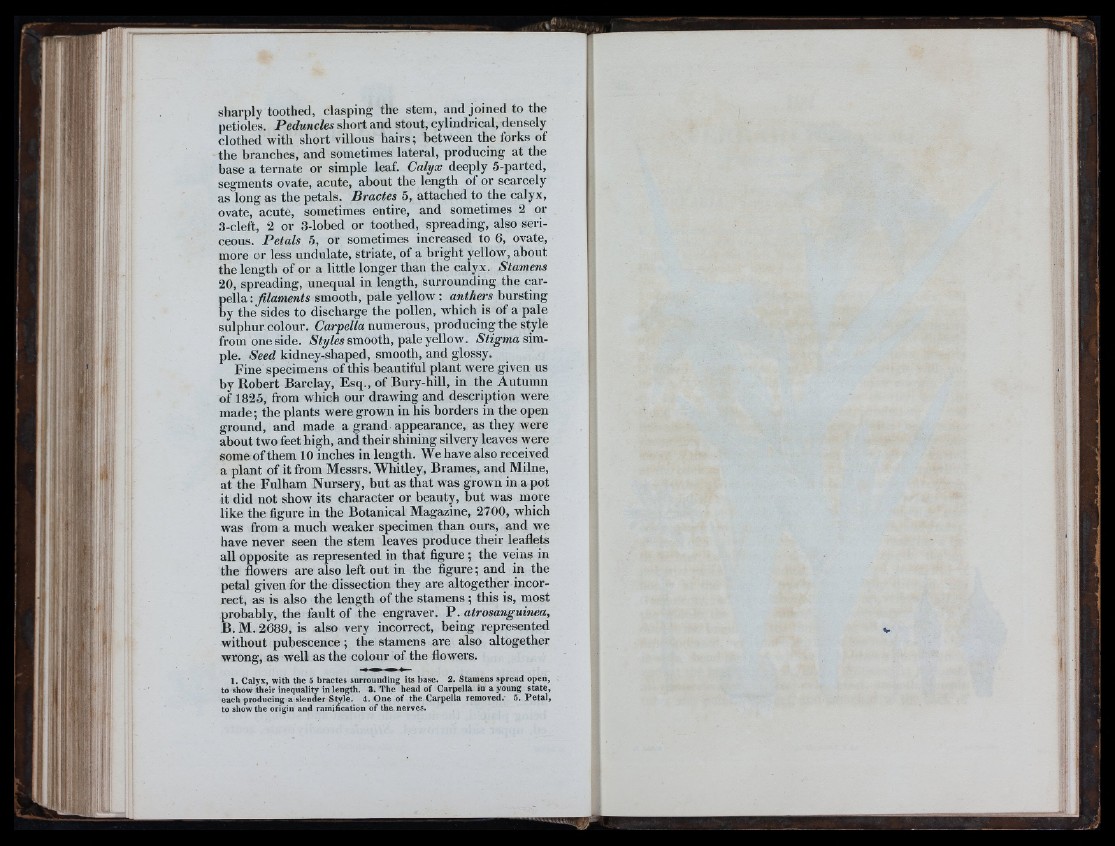
tel: m
sharply toothed, clasping tlie stem, and joined to the
petioles. Peduncles short and stout, cylindrical, densely
clothed with short villous hairs; between the forks of
the branches, and sometimes lateral, producing at the
hase a ternate or simple leaf. Calyx deeply 5-partcd,
segments ovate, acute, ahout the length of or scarcely
as long as the petals. Bractes 5, attached to the calyx,
ovate, acute, sometimes entire, and sometimes 2 or
3-cleft, 2 or 3-lobed or toothed, spreading, also sericeous.
Petals 5, or sometimes increased to 6, ovate,
more or less undulate, striate, of a bright yellow, about
the length of or a little longer than the calyx. Stamens
20, spreading, unequal in length, surrounding the car-
leWa,: filaments smooth, pale yellow : anthers bursting
jy the sides to discharge the pollen, which is of a pale
sulphur colour. Carpella numerous, producing the style
from one side. Nfy/es smooth, pale yellow. simple.
Seed kidney-shaped, smooth, and glossy.
Fine specimens of this beautiful plant were given us
by Robert Barclay, Esq., of Bury-hill, in the Autumn
of 1825, from which our drawing and description were
made; the plants were grown in his borders in the open
ground, and made a grand appearance, as they were
about two feet high, and their shining silvery leaves were
some of them 10 inches in length. We have also received
a plant of it from Messrs. Whitley, Brames, and Milne,
at the Fulham Nursery, but as that was grown in a pot
it did not show its character or beauty, but was more
like the figure in the Botanical Magazine, 2700, which
was from a much weaker specimen than ours, and we
have never seen the stem leaves produce their leaflets
all opposite as represented in that figure; the veins in
the flowers are also left out in the figure; and in the
petal given for the dissection they are altogether incorrect,
as is also the length of the stamens ; this is, most
probably, the fault of the engraver. P. atrosanguinea,
B. M.2689, is also very incorrect, being represented
without pubescence; the stamens are also altogether
wrong, as well as the colour of the flowers.
1. Calyx, with the 5 b ractes surrounding its base. 2. Stamens sp read open,
to show th e ir inequality in length. 3. The head o f Carpella in a young s ta te ,
each producing a slender Style. 4. One o f th e Carpella removed.* 5. P e ta l,
to show the origin and ramification o f the nerves.
•IJ
i